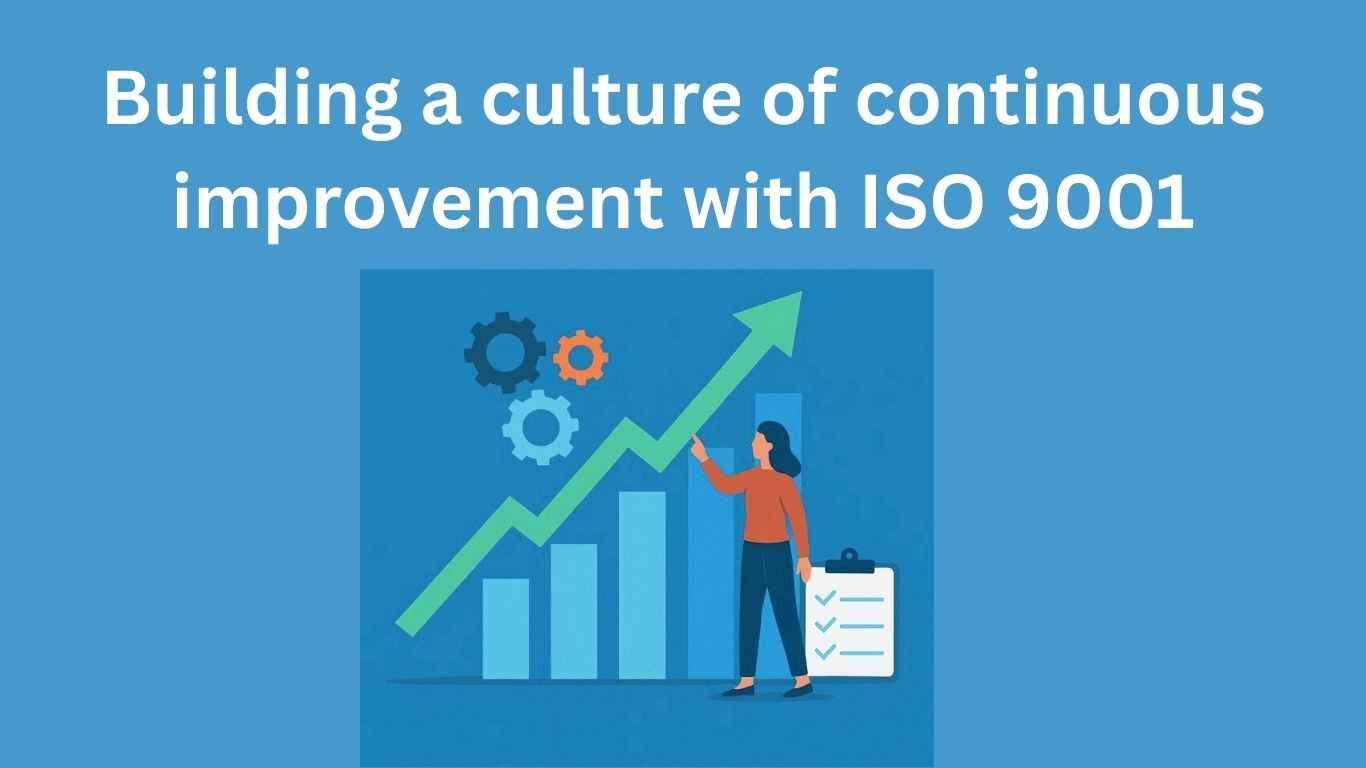Many companies see ISO 9001 only as a certificate to show customers. After the audit, it goes into a file. But the true value comes when ISO 9001 is used every day, when improvement becomes a habit, when quality becomes part of the company’s culture.
This post explains how to build that culture of ISO 9001 continuous improvement. It also covers the latest ISO 9001 updates and shows how to make the standard practical in daily work.
Why Continuous Improvement Matters in ISO 9001
ISO 9001 is not just about passing an audit. It is about creating a system that improves over time. Continuous improvement means:
- Processes get better step by step
- Mistakes and rework reduce
- Customers are happier
- Employees feel proud of their work
When improvement is part of the culture, audits become smooth. Instead of stress, they are just a natural check of what you already do.
What a Culture of Continuous Improvement Looks Like
A culture of ISO 9001 continuous improvement is easy to spot:
- Right mindset – People believe there is always a better way
- Small daily changes – Teams make small improvements every day
- Open feedback – Everyone can share ideas without fear
- Leadership support – Leaders set the example by encouraging change
- Tracking progress – Improvements are measured and shown clearly
- Recognition – Employees are appreciated for their ideas
- Alignment with goals – Improvements support the company’s strategy
How ISO 9001 Supports Continuous Improvement
ISO 9001 already has tools for improvement. The PDCA (Plan–Do–Check–Act) cycle is at the heart of the standard. Clause 10 directly asks for improvement actions. Leadership clauses also require managers to show commitment to quality.
When companies use audits, management reviews, and corrective actions not as paperwork but as tools, ISO 9001 becomes a driver of progress.
Latest Updates in ISO 9001 (2024 Amendment & 2026 Revision)
ISO 9001 is changing, and organizations must be ready.
- 2024 Amendment – Companies must now consider climate change in their context (Clause 4.1)
- 2026 Revision (expected) – The new version will focus more on:
- Leadership and quality culture
- Ethical behavior
- Risk and opportunity management
- Use of data and digital systems
- Sustainability in operations
Companies that already have a culture of improvement will find it easy to adapt to these changes.
Practical Steps to Build an ISO 9001 Continuous Improvement Culture
Here are simple steps you can take to make improvement part of daily work:
- Leadership alignment – Leaders must show clear support
- Awareness and training – Teach staff what continuous improvement means
- Suggestion system – Use a box, form, or app to collect ideas
- Small experiments – Test small changes with the PDCA cycle
- Visual management – Show progress on boards and dashboards
- Regular reviews – Hold short meetings on improvements
- Recognition – Appreciate even small efforts
- Integrate into work – Make improvement part of normal tasks
- Audit for improvement – Use internal audits to check culture, not just compliance
- Refresh methods – Update tools and ideas to keep culture alive
Common Challenges and How to Overcome Them
Building a culture of ISO 9001 continuous improvement is not always easy. Here are some common challenges:
- Fear of blame – Employees hide problems
Solution: Create a no-blame culture where mistakes are learning points - Lack of time – Teams feel too busy
Solution: Schedule even 10 minutes weekly for improvement talks - Ignored suggestions – Ideas are shared but not used
Solution: Always respond to suggestions, even if they are not implemented - No follow-up – Actions are started but forgotten
Solution: Assign owners and review regularly - Low leadership involvement – Leaders are absent
Solution: Make improvement part of leadership goals and reviews
Benefits of ISO 9001 Continuous Improvement in Daily Work
When companies make continuous improvement part of their culture, they enjoy real benefits:
- Lower errors and rework
- Cost savings through efficiency
- Higher customer satisfaction
- Motivated and engaged employees
- Faster response to change
- Stress-free audits
These benefits build over time and make ISO 9001 a tool for growth, not just compliance.
How to Measure Continuous Improvement Culture in Your Company
To know if your culture is improving, check these signals:
- Number of improvement ideas shared each month
- Percentage of ideas implemented
- Time taken from idea to action
- Reduction in repeated problems
- Employee feedback on safety to share ideas
- Audit findings related to improvement
- Customer complaints trend
These metrics show if the culture is strong and growing.
Conclusion: Make ISO 9001 Continuous Improvement a Way of Life
ISO 9001 should not stop at certification. It should live in daily work. A culture of ISO 9001 continuous improvement makes employees engaged, processes efficient, and customers satisfied.
Start small. Involve leaders. Collect ideas. Celebrate wins. Use ISO 9001 tools not just for audits but for real growth.
The upcoming changes in ISO 9001 will reward companies that already practice improvement, sustainability, and quality leadership. If you start today, your organization will not just pass audits — it will thrive.


Solid article!